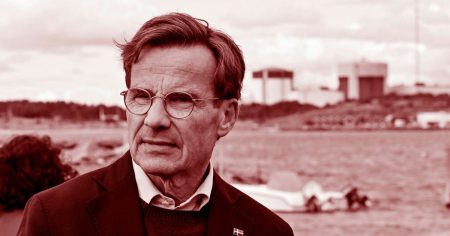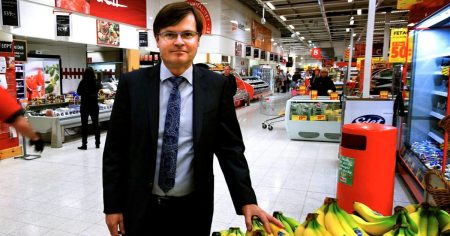The Center Party is facing internal turmoil, according to recent reports, with anonymous sources claiming that leader Muharrem Demirok’s leadership is being questioned. However, public statements from party members like MEP Abir Al-Sahlani suggest the conflict revolves around the party’s stance on government formation, specifically Demirok’s clear support for Magdalena Andersson of the Social Democrats as the preferred prime ministerial candidate. This division highlights a long-standing tension within the party between those who favor aligning with the Social Democrats and a faction, primarily within the youth wing, open to collaboration with the Sweden Democrats. The wisdom of such a move, mirroring the Liberals’ strategy, is debatable given the Liberals’ declining political fortunes and the Center Party’s own voter base’s resistance to a partnership with the Sweden Democrats.
The Center Party’s current poll numbers, hovering around 5%, are admittedly not ideal. However, the Liberal Party’s fluctuating support between 2.5% and 4% serves as a cautionary tale. Since joining the current governing coalition with the Sweden Democrats, the Liberals have been forced to compromise on key policy areas like foreign aid, climate targets, and immigration, resulting in significant political setbacks. It’s highly unlikely that the Center Party would fare any better in such an arrangement. Polls consistently show that Center Party voters reject collaboration with the Sweden Democrats and overwhelmingly prefer an alliance with the Social Democrats over the Moderates. Aligning with the current right-wing coalition would likely lead to a drop in support, and there’s little reason to believe the Center Party would be more successful than the Liberals in negotiating with Jimmie Åkesson, leader of the Sweden Democrats.
While this analysis doesn’t necessitate a pre-election commitment to supporting Magdalena Andersson as prime minister in 2026, it underscores the importance of considering the alternatives. One option is to campaign on the promise of remaining on the political sidelines, but the appeal of such a strategy to voters is questionable. Meanwhile, Ulf Kristersson, leader of the Moderates, has made his intention to continue the partnership with the Sweden Democrats clear, raising the critical question of what role Jimmie Åkesson would play in a future government. Would the Center Party be willing to campaign on the premise of potentially joining such a coalition?
On the other hand, while the Social Democrats, under Magdalena Andersson, may lack a compelling vision, she offers a more centrist approach, even leaving the door open for collaboration with Ulf Kristersson should the Moderates reconsider their alliance with the Sweden Democrats after a potential election loss. This provides a stark contrast to the current government’s reliance on the far-right. Andersson’s approach, while not without its shortcomings, offers a more palatable option for Center Party voters wary of the Sweden Democrats.
The Center Party faces a challenging political landscape, with neither their negotiating position nor their poll numbers matching their 2018 peak. However, the party possesses a significant strength: consistency. From Maud Olofsson to Annie Lööf and now Muharrem Demirok, the Center Party has maintained a consistent green-liberal platform, resisting populism and nationalism while focusing on entrepreneurship, employment, and rural development. They are the only party with this specific profile that seeks to replace the current right-wing government. Capitalizing on this unique position is a more strategic path than signaling a willingness to compromise on core values.
Patience is key for the Center Party. Smaller parties often gain visibility during election campaigns, offering an opportunity to connect with voters and sway public opinion. The Center Party’s performance in the recent European Parliament elections, where they retained their two seats despite pre-election polls suggesting otherwise, serves as a reminder of this potential. Maintaining a clear and consistent message, focusing on their strengths, and waiting for the opportune moment to engage with voters offers a more promising path forward than compromising their identity for short-term gains. The current political climate presents challenges, but also an opportunity for the Center Party to reaffirm its values and present a compelling alternative to the existing political landscape.














